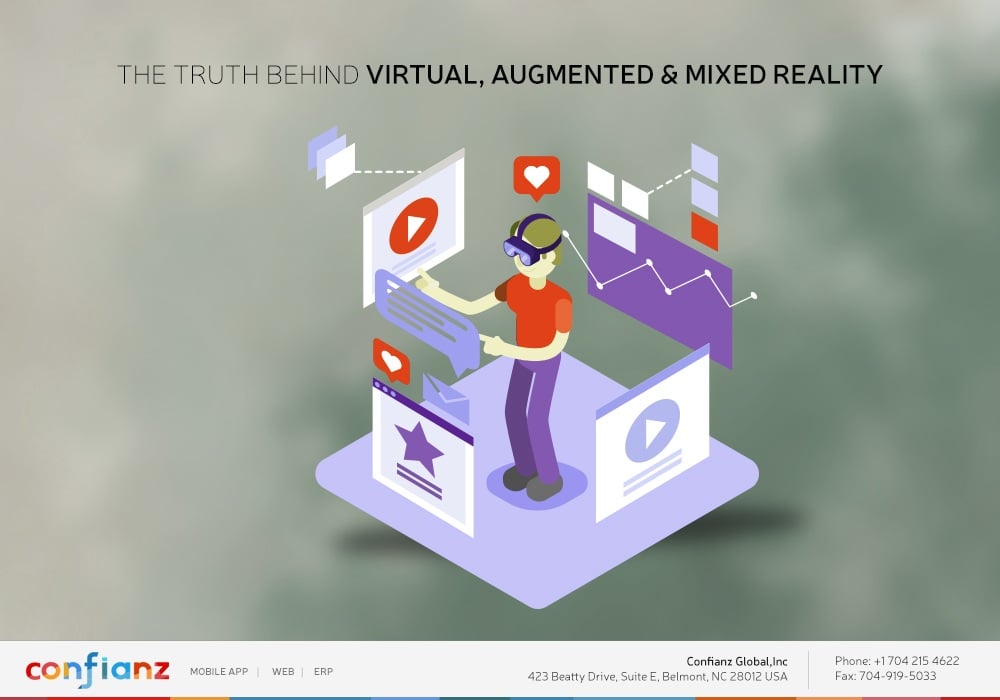The distinctions between the real world and virtual reality continue to blur. We have come a long way from the days of View-Masters, thin cardboard discs that contained stereoscopic 3D photographs. Advancement in virtual technology provides users with a breathtaking experience without leaving the room. This is something that was once only a figment of the imagination. Just a short time ago, it was unclear whether augmented or mixed reality would take off. Its fate is becoming more clear. Innovative tech giants like Facebook, Google, Samsung and Apple are investing billions in virtual and augmented reality hardware with an expected high yield of return. This speaks volumes about its future. Let’s take a look at the nuances between VR, AR, and MR that plague our news feeds more often than not.
Virtual Reality (VR) has been the talk of the tech space for years — A headset that can take you from your living room to an all-encompassing world of sound and sight in seconds. Remember the roller coaster ride in the arcade that gave the look and feels of being on a roller coaster without you ever leaving the ground? Fast forward to the present day, VR’s advancements now generate more stimulating, realistic sounds, images, and sensations that will make you forget that you’re fully immersed in an artificial space.
Unlike its predecessor, Augmented Reality (AR) simply adds artificial digital items to your real-world environment. These virtual items enhance the things we see, hear and feel. In short, these items are nothing more than overlaid blocks of information and texts. These blocks can sometimes appear as cartoon-like images and games. Some examples of AR include social media filters and virtual surgical procedures; think Pokemon Go. When compared to other reality technologies, augmented reality sits at the center of the real and virtual worlds.
The most complex of them all is Mixed Reality (MR), also called Hybrid Reality. In MR, both the virtual and real world are merged to produce a new environment equipped with visualizations of both physical and digital objects that interact in real-time. This technological phenomenon is made possible through advancements in computer vision, graphical processing power, display technology, and input systems. In an MR users are fully immersed in the virtual environment while the real world is blocked out. Although it sounds a lot like VR, the digital objects don’t overlap real ones, whereas in VR everything is virtual. Mixed reality is the next evolution in human, computer, and environment interaction and unlocks possibilities that before now were restricted to our imaginations.
So, how does it all work? Remember Mattel’s popular View-Master, the headset that was introduced to the market in the 1960’s and provided a colorful experience with the press of a lever? VR works the same way, but in a more modern fashion. It requires a set of lenses inside a viewport on a headset along with a mounted device where the experience is stored or computed. Through pure observation and full immersion into an artificial environment, viewers can do anything or visit anywhere without leaving the room.
AR can be experienced with only a camera-equipped smartphone and an AR App. Two key elements that make it work are the camera’s capacity to capture the environment and the software’s ability to calculate and project computer-generated visuals or content. Users can easily shop for things like furniture while getting a glimpse on how the product would look in any room or space. Designers and architects alike would greatly benefit from the use of AR technology. Instead of just shopping online through pictures, customers have the ability to bring life-like objects into real-life contexts.
In an MR world, instead of depending solely on headsets or phone screens, users interact with immersive content utilizing their natural body and finger gestures. Although Apple and Google are trailblazers in AR technology, Microsoft has taken the lead when it comes to bringing MR to life. Microsoft’s “Hololens” is a game that uses holographic computing, enabling users to engage with digital content with holograms hybridized in the real world.
MR’s difficult distinction among its counterparts make its future undefined. However, AR has shown an increase in its adoption especially with the recent hit game, Pokemon GO. VR has been around the longest and isn’t showing any indications of slowing down. In efforts to democratize these technologies, companies are continuously sharing their design and development frameworks with the world. Today, all it takes to get into the experience is a smartphone with an up-to-date operating system, decent camera, and an app— or glasses.
Are you still waiting to build your dream android app or ios app and take your business to the next level? Just fill this simple form here to get started!
Want to know how much it cost to make an App? Then try our Mobile app cost Calculator







